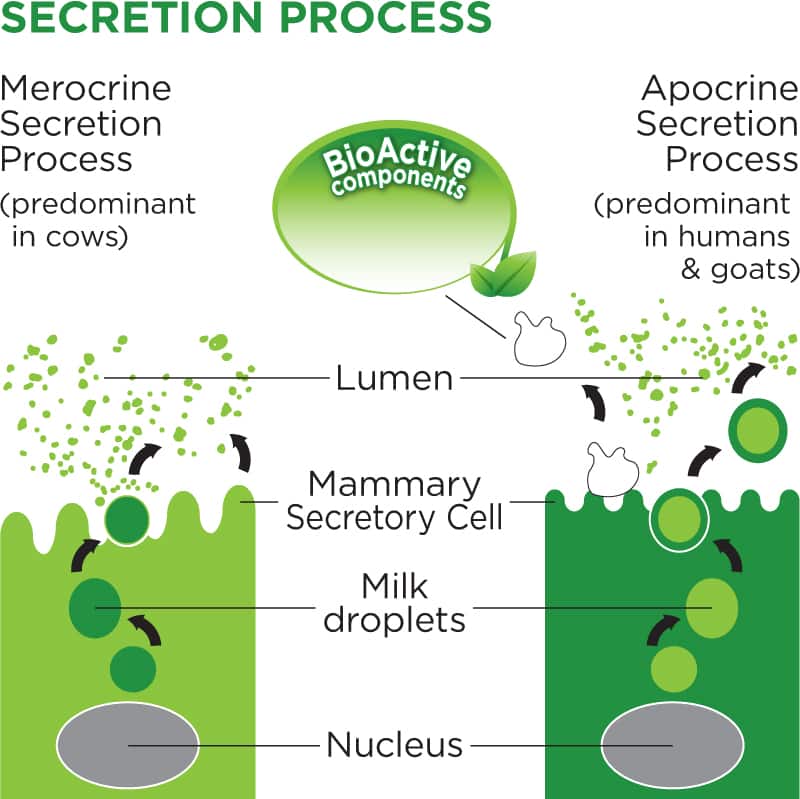Milk is made up of protein, fat, carbohydrate, water, minerals and vitamins. These components are packaged inside cells within the mammary gland and are released from the cells by two different pathways of secretion.1
- Merocrine secretion
proteins, lactose, minerals and water are released without disruption of the cell. - Apocrine secretion
milk fat is enveloped by the cell membrane before being pinched off from the cell. In this process some of the cell components are also released into milk.
Milk proteins consist of whey and casein proteins. There are 4 casein proteins – αs1-, αs2-, β- and κ-casein. Low levels of αs1-casein cause the proteins, lactose, minerals and water in milk to be secreted by the apocrine pathway.2In New Zealand goat milk αs1-casein makes up only 5-10% of the total protein. Similarly, around 5% of the total protein of human is αs1-casein.3
As a result much of the proteins, lactose and water in both goat and human milk are secreted by the apocrine pathway. In cow milk, however, around 25% of the total protein is αs1-casein.4 Therefore, proteins, lactose and water in cow milk are only secreted by the merocrine pathway.

- 1Linzell and Peaker, 1971
- 2Wooding, Peaker et al. 1970; Neveu, Riaublanc et al. 2002
- 3Martin et al, 1996; Poth et al, 2008
- 4Martin et al. 2002; Caroli et al, 2009